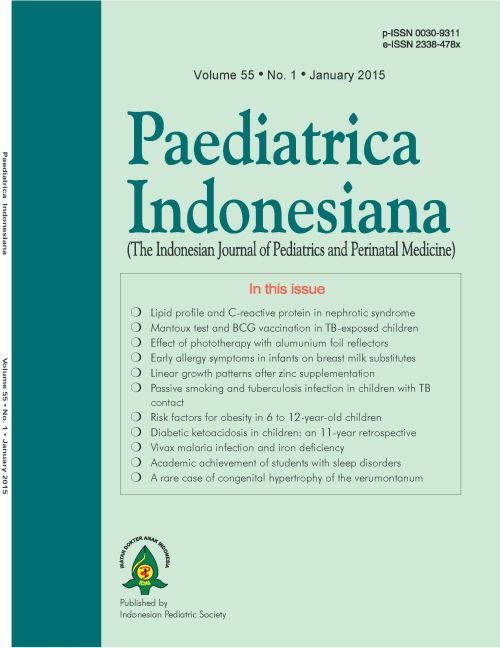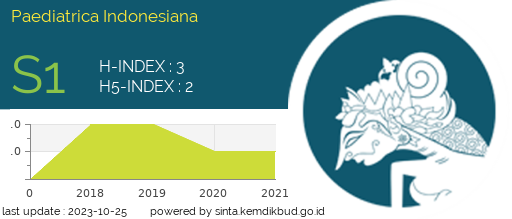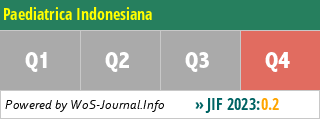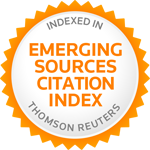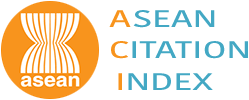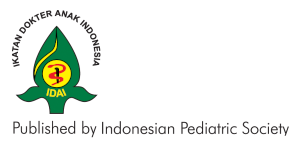Academic achievement of junior high school students with sleep disorders
DOI:
https://doi.org/10.14238/pi55.1.2015.50-8Keywords:
sleep disorders, academic achievement, related factorsAbstract
Background Sleep disorders are prevalent in adolescents and may influence their academic achievement. To date, no study has been done in Indonesia on academic achievement in students with sleep disorders and its related factors. Objective To assess for relationships between academic achievement and related factors, including gender, motivation and learning strategies, IQ level, maternal educational level, socioeconomic status, family structure, after-hours education program, presence of TV/computer in the bedroom, sleep duration during school days, as well as bedtime and wakeup time difference in junior high school students with sleep disorders. Methods This cross-sectional study was performed from January to March 2013. Subjects were students from five junior high schools in Jakarta who fulfilled the criteria for sleep disorders based on the Sleep Disturbance Scale for Children questionnaire. Results There were 111 study subjects. The prevalence of sleep disorders was 39.7%, mostly in difficulties initiating and maintaining sleep (70.2%). Below-average academic achievement was seen in 47.6% of subjects. Factors significantly related to below-average academic achievement were after-hours education program (prevalence ratio 5.6; 95%CI 1.36 to 23.18; P = 0.017), average IQ level (prevalence ratio 3.26; 95%CI 1.38 to 7.71; P = 0.007), and male gender (prevalence ratio 2.68; 95%CI 1.06 to 6.78; P = 0.037). Conclusion Among junior high school students with sleep disorders, factors related to below-average academic achievement are afterhours education program (more than 2 types), the average IQ level, and male gender.References
Liu X, Liu L, Owens JA, Kaplan DL. Sleep patterns and sleep problems among school children in the United States and China. Pediatrics. 2005;115:241-9.
Tanjung MF, Sekartini R. Masalah tidur pada anak. Sari Pediatri. 2004;6:138-42.
Dawson P. Sleep and sleep disorders in children and adolescents: information for parents and educators. In: National Association of School Psychologists, editors. Helping children at home and school II: handouts for families and educators. Bethesda: NASP; 2004. p. 301-10.
Tagaya H, Uchiyama M, Ohida T, Kamei Y, Shibui K, Ozaki K, et al. Sleep habits and factors associated with short sleep duration among Japanese high-school students: a community study. Sleep Biol Rhythms. 2004;2:57-64.
Dorofaeff TF, Denny S. Sleep and adolescence. Do New Zealand teenagers get enough? J Paediatr Child Health. 2006;42:515-20.
Gibson ES, Powles AC, Thabane L, O’Brien S, Molnar DS, Trajanovic N, et al. “Sleepiness†is serious in adolescence: two surveys of 3235 Canadian students. BMC Public Health. 2006;6:116-24.
Lazaratou H, Dikeos DG, Anagnostopoulos DC, Sbokou O, Soldatos CR. Sleep problems in adolescence. A study of senior high school students in Greece. Eur Child Adolesc Psychiatry. 2005;14:237-43.
Liu X, Uchiyama M, Okawa M, Kurita H. Prevalence and correlates of self-reported sleep problems among Chinese adolescents. Sleep. 2000;23:27-34.
Yang CK, Kim JK, Patel SR, Lee JH. Age-related changes in sleep/wake patterns among Korean teenagers. Pediatrics. 2005;115:250-6.
Natalita C, Sekartini R, Poesponegoro H. Skala gangguan tidur untuk anak (SDSC) sebagai instrumen skrining gangguan tidur pada anak sekolah lanjutan tingkat pertama. Sari Pediatri. 2011;12:365-72.
Bruni O, Ottaviano S, Guidetti V, Romoli M, Innocenzi M, Cortesi F, et al. The Sleep Disturbance Scale for Children (SDSC). Construction and validation of an instrument to evaluate sleep disturbances in childhood and adolescence. J Sleep Res. 1996;5:251-61.
Haryono A, Rindiarti A, Arianti A, rawitri A, Ushuluddin A, Setiawati A, et al. Prevalensi gangguan tidur pada remaja usia 12-15 tahun di sekolah lanjutan tingkat pertama. Sari Pediatri. 2009;11:149-54.
Chung K, Cheung MM. Sleep-wake patterns and sleep disturbance among Hong Kong Chinese adolescents. Sleep. 2008;31:185-94.
Bruni O, Ferini-Strambi L, Russo PM, Antignani M, Innocenzi M, Ottaviano P, et al. Sleep disturbances and teacher ratings of school achievement and temperament in children. Sleep Med. 2006;7:43-8.
Kahn A, Van de Merckt C, Rebuffat E, Mozin MJ, Sottiaux M, Blum D, et al. Sleep problems in healthy preadolescents. Pediatrics. 1989;84:542-6.
Wolfson AR. Sleep schedules and daytime functioning in adolescents. Child Dev. 1998;69:875-87.
Rezeki RM, Soedjatmiko, Latief A. Pengaruh media visual terhadap prestasi akademis murid kelas VII Sekolah Menengah Pertama Negeri 115 Jakarta. Thesis. Jakarta: Departemen Ilmu Kesehatan Anak FKUI; 2013.
Mak KK, Lee SL, Ho SY, Lo WS, Lam TH. Sleep and academic performance in Hong Kong adolescents. J Sch Health. 2012;82:522-7.
Blunden S, Lushington K, Lorenzen B, Ooi T, Fung F, Kennedy D, et al. Are sleep problems under-recognised in general practice? Arch Dis Child. 2004;89:708-12.
Stores G. Aspects of sleep disorders in children and adolescents. Dialogues Clin Neurosci. 2009;11:81-90.
Sharif I, Wills TA, Sargent JD. Effect of visual media use on school performance: a prospective study. J Adolesc Health. 2010;46:52-61.
Leeson P, Ciarrochi J, Heaven PCL. Cognitive ability, personality, and academic performance in adolescence. Pers Individ Diff. 2008;45:630-5.
Papalia DE, Olds SW, Feldman RD. Human development. 8th ed. Boston: McGraw-Hill; 2001. p. 333-5.
Sedaghat M, Abedin A, Hejazi E, Hassanabadic H. Motivation, cognitive engagement, and academic achievement. Proced Soc Behav Sci. 2011;15:2410.
Moriana JA, Alos F, Alcala R, Pino MJ, Herruzo J, Ruiz R. Extra-curricular activities and academic performance in secondary students. Electronic J of Res in Educ Psychol. 2006;4:35-46.
Uwaifo VO. The effects of family structure and parenthood on the academic performance in Nigerian University students. Stud Home Comm Sci. 2008;2:121-4.
Darmaningtyas. Pendidikan dasar yang menghapuskan kemiskinan. In: Hamied FA, Syihabuddin, Maesuroh, Siswanto Y, Suparno A, editors. Pendidikan di Indonesia: masalah dan solusi. Jakarta: Kementerian Bidang Koordinasi Pendidikan, Agama, dan Aparatur Negara; 2008. p. 77-8.
Schochat T, Bretler O, Tzizchinsky O. Sleep patterns, electronic media exposure, and daytime sleep-related behaviours among Israeli adolescents. Acta Paediatrica. 2010;99:1396-400.
Downloads
Published
How to Cite
Issue
Section
License
Authors who publish with this journal agree to the following terms:
Authors retain copyright and grant the journal right of first publication with the work simultaneously licensed under a Creative Commons Attribution License that allows others to share the work with an acknowledgement of the work's authorship and initial publication in this journal.
Authors are able to enter into separate, additional contractual arrangements for the non-exclusive distribution of the journal's published version of the work (e.g., post it to an institutional repository or publish it in a book), with an acknowledgement of its initial publication in this journal.
Accepted 2016-07-12
Published 2015-03-01

